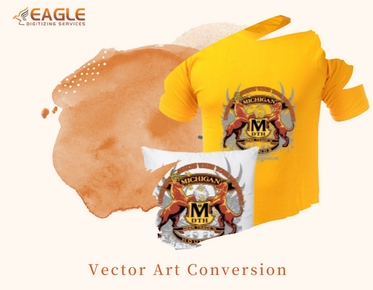The Importance and Benefits of Vectorizing an Image
In today's digital age, where images are used in myriad ways from web design to large format printing, understanding the importance of vectorizing an image can prove invaluable. Vectorizing, or converting an image from raster to vector, involves the transformation of an image into a format that is scalable without loss of quality, offering endless utility across various industries.
What is Vectorization?
Vectorization is the process of converting raster graphics, which are composed of pixels, into vector graphics made of paths. These paths are based on mathematical expressions and can consist of points, lines, curves, and shapes. This conversion allows the image to be resized at any scale without losing its sharpness or clarity, unlike raster images which can become pixelated or blurry when enlarged.
Why Vectorize an Image?
There are several reasons why one would choose to vectorize an image. Chief among these is scalability. For businesses involved in printing, designing, or branding, having graphics that can be resized to fit different formats is critical. Vector graphics maintain clarity and quality across various sizes and resolutions, making them ideal for anything from business cards to billboards.
Superior Image Quality
One of the principal advantages of vector graphics is their ability to maintain high quality when resized. This ensures that logos and designs remain crisp and professional-looking at any scale, from small website icons to large-scale banners. This is particularly crucial in industries such as screen printing, where clarity is non-negotiable.
Efficient Editing Processes
Working with vector files often translates to more efficient editing processes. Unlike pixels, vector paths can be easily adjusted, colors can be modified seamlessly, and components of the design can be moved or resized without introducing errors. This flexibility is invaluable to graphic designers who need to tweak their designs frequently and ensure consistency in their outputs.
Applications of Vectorized Images
It's not just about quality and flexibility. The applications for vectorized images are broad and impactful across various fields. For example, logos designed in vector format can be used across different media and merchandise without compromise. Fashion and apparel industries benefit from vector images in creating patterns and designs that require perfect alignment and scaling during the production phase.
Printing and Manufacturing
In printing and manufacturing, vectorized images are indispensable. They enable precise cut lines for decals, engravings, and other contours in material production. With vector graphics, businesses like Eagle Digitizing can provide custom vector art services tailored for industries ranging from printing to digital marketing.
Vector Art Services are commonly used in branding due to their scalability and adaptable nature. These services are essential for companies aiming to preserve brand integrity across various formats and platforms.
Saving Time and Resources
The efficiency of vector images means less time spent correcting blurs or distortions typically associated with raster files when resized. For businesses, particularly those in creative fields, this efficiency translates to cost savings, reduced resource allocation towards design corrections, and ultimately, enhanced productivity.
The Future of Vectorization
The demand for high-quality, flexible designs is only expected to grow as more businesses recognize the utility and advantages of vector graphics. Innovations in vectorization technology continue to simplify the conversion process, making it accessible even to small businesses and independent designers.
Emerging tools and software are poised to make vector conversion even more efficient, ensuring rapid turnaround times without sacrificing quality. As businesses increasingly depend on versatile and adaptable graphics for their operations, mastering vectorization or partnering with expert services is becoming an industry standard.
In conclusion, the transition towards vector-based formats provides numerous benefits that are hard to overlook in today's competitive and visually driven marketplaces. As technology evolves, the accessibility and reliance on vector graphics are likely to become ever more pronounced, securing their role as a foundational element in digital media and design.
.png)


